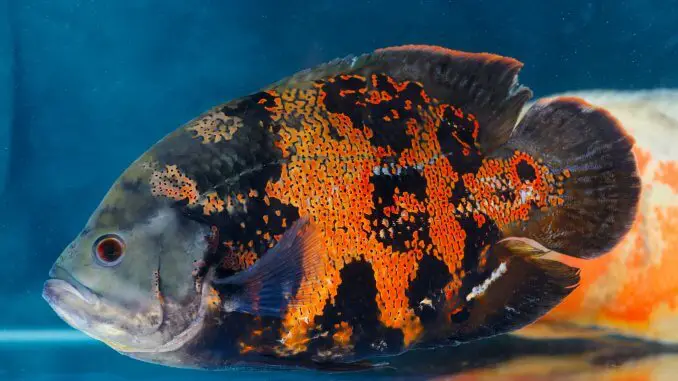
The oscar fish, otherwise known as the oscar cichlid, is a freshwater fish of the cichlid family.
The oscar fish’s intelligent personality and attractive, marbled-orange coloring makes it an appealing aquarium fish. However, because of the oscar fish’s aggressive temperament, the fish is difficult to house in a community tank and unsuitable for beginners.
TABLE OF CONTENTS
Oscar Fish Facts & Overview
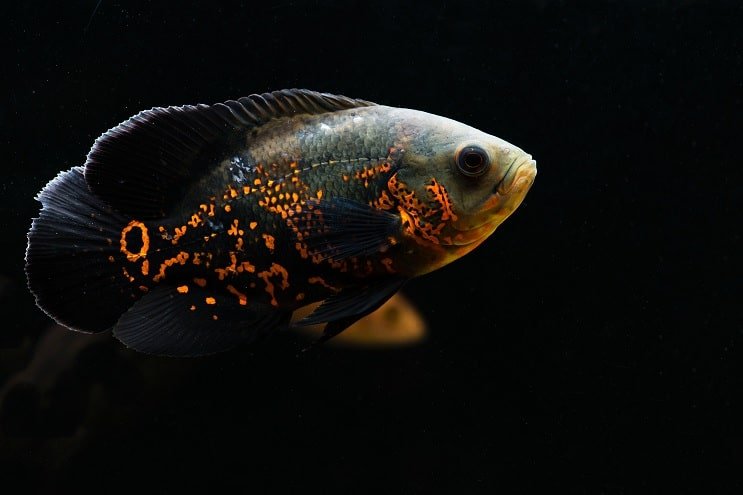
| Scientific name: | Astronotus ocellatus |
| Common names | Oscar fish, oscar cichlid, tiger oscar, velvet cichlid, marble cichlid |
| Distribution: | South America (Argentina, Brazil, Colombia, Paraguay, Peru, Uruguay, and Venezuela) |
| Size: | 10–12 inches |
| Life expectancy: | 15–20 years |
| Color: | Orange and black/brown marbled colors |
| Diet: | Omnivore |
| Temperament: | Aggressive |
| Minimum tank size: | 55 gallons |
| Temperature: | 74–81°F (23–27°C) |
| pH: | 6–8 |
| Hardness: | 5–20 dGH |
| Care level: | Moderate |
| Breeding: | Egg depositor |
Origin
The oscar fish is found in parts of South America, including Argentina, Brazil, Colombia, Paraguay, Peru, Uruguay, and Venezuela. The fish swim throughout the freshwater Amazon and Orinoco Rivers and tributaries, enjoying the warm water temperatures and moderate-to-fast currents of these biodiverse environments.
Varieties of oscar fish have been bred in and introduced to other parts of the world, including Africa, Southern Asia, and North America. Oscar fish are also found in parts of French Guiana and Suriname.
Wild populations of oscar fish are common, and the fish are classed as non-extinct.
Adult Size & Lifespan
Full-grown oscar fish reach up to 12 inches in length. In the wild, oscar fish grow even longer, reaching lengths of up to 14 inches.
Oscar fish are monomorphic, which means there are no obvious differences between males and females in size or physical appearance.
In captivity, oscar fish live between eight and 15 years. In the wild, the fish live up to 20 years. Males and females have the same average lifespans.
Availability
Oscar fish are easy to find for sale in pet stores and online. The typical cost of an oscar fish is $12–$15 per fish.
These fish prefer to be housed in at least a pair. The upfront cost of two oscar fish is around $30.
- You can buy oscar fish (called “tiger oscar”) and albino oscar fish at liveaquaria.
- Aquaticarts is another reputable online store that sells standard and albino variations of oscar fish
Appearance & Behavior
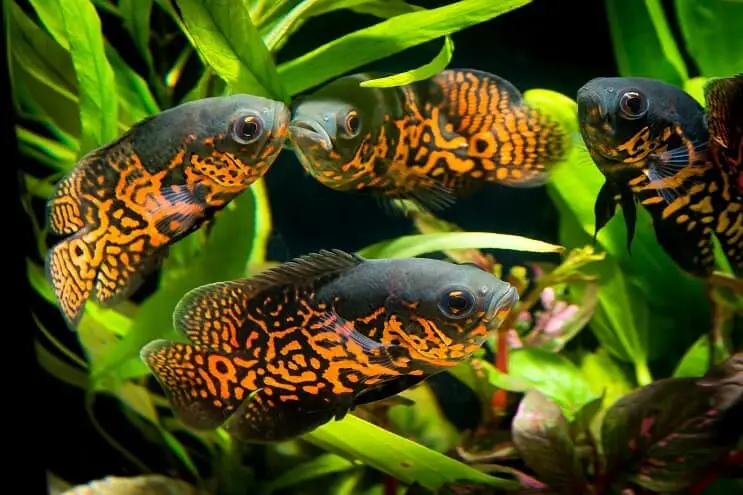
Oscar fish are known as “tiger oscars” and “marble cichlids” because of their black/brown and orange markings.
The oscar fish species is considered one of the most intelligent aquarium species, but oscar fish have an aggressive, territorial side that makes the fish challenging to manage.
Colors, Patterns, Fins, and Sex Differences
Oscar fish have brown/black bodies with red or orange marbling. Some oscar fish variations have green or olive bodies. There are albino variations of oscar fish, which have white bodies with red patterning.
With large, oval-shaped bodies, oscar fish are a stocky aquarium fish species. The fish have large heads, large mouths, and large eyes. They have fan-shaped fins that extend the length of the fish’s body.
Male and female oscar fish are identical in shape and color.
When oscar fish are born, the fish’s colors are dull, and their dark markings are deep black. The colors of the fish become brighter and the black markings turn gray as the fish grow. A stressed or sick oscar fish will look duller than usual.
The most common type of oscar fish is the tiger oscar fish, but there are other subspecies of oscar fish that have their own unique appearances.
Red oscars have fiery-red coloring, while albino oscars are white and red.
Crossbred versions of the oscar fish include:
- blue oscars – typical oscar fish but with blue patterning
- black oscars – black fish with white bands running around their bodies
- white oscars – pale, pink fish
- green oscars – typical oscars with green and yellow coloring
Typical Behavior
Oscar fish are intelligent fish that swim with purpose around the tank. The fish recognize their owners and can be hand-fed, giving them the nickname “river dogs.” The oscar fish’s intelligence is an appealing quality for aquarists.
However, oscar fish are territorial and have aggressive tendencies. You should carefully choose which fish to house with oscar fish in a community aquarium to prevent fighting and stress amongst the fish.
If oscar fish feel that their territory is being invaded, the oscar fish will attack their tank mates, push other fish around, and chase the other fish. Oscar fish fight with fish of their own species, especially during breeding season.
Oscar fish are quick swimmers and prefer to frequent the middle section of the tank. They require plenty of open space. Oscar fish occasionally swim to the bottom of the tank to search for food in the substrate.
Although the oscar fish is a social species, it enjoys the privacy of caves and plants to hide in.
In an aquarium setting, oscar fish are active during the day and rest during the night. The fish prefer frequent small meals throughout the day.
Oscar Fish Care & Tank Requirements
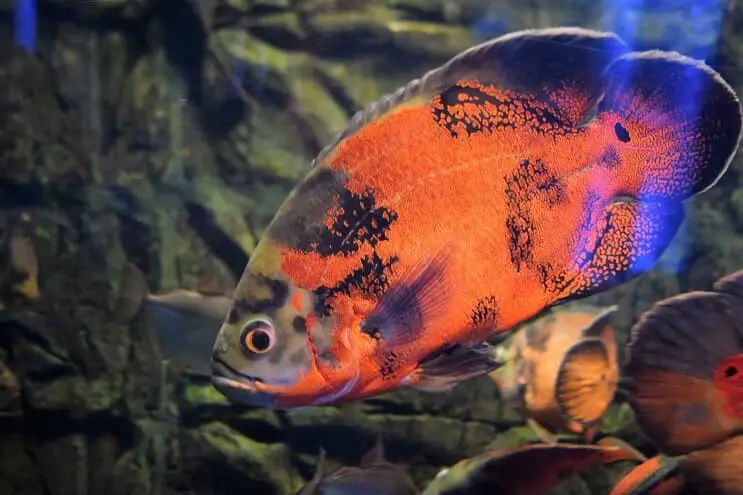
Oscar fish have moderate care needs. Replicating the oscar fish’s freshwater tropical habitat and varied omnivorous diet is easy. However, because of the oscar fish’s aggressive tendencies, the fish requires extra care when housing with other fish species.
A large tank, consistent water parameters, and a strong water flow are the three most important tank requirements for oscar fish. You should feed oscar fish a healthy, varied diet of live foods, pellet foods, and plant matter.
Habitat and Tank Requirements
In the wild, oscar fish are found in the freshwater Amazon and Orinoco Rivers and tributaries. The oscar fish’s natural habitat is one of the most biodiverse environments on the planet, and you should aim to replicate this habitat in the aquarium, with warm, tropical waters and varied plant species.
To recreate the oscar fish’s natural habitat, fill a large, freshwater tank and introduce a soft, sandy substrate with debris, vegetation, and rocks scattered on top.
Tank decorations like caves and plants like Java fern and Java moss can be used to replicate the rocky riverbed and underwater greenery.
Oscar fish enjoy digging in the substrate and rearranging the tank, so plants should be hardy and firmly rooted, and tank decorations should be firmly fixed in place.
Tank Conditions
The desired tank conditions for oscar fish are listed below:
| Water type: | Medium-hard, freshwater |
| Tank size: | Minimum 25 gallons |
| Water temperature: | 74–81ºF |
| Substrate: | Sand, rocks, and vegetation |
| Tank setup: | Plants, caves, and decorations |
| Acidity: | 6–8 pH |
| Water hardness: | 5–20 dkH |
| Filter: | Yes, to create a strong current and clean the water |
| Bubbler: | Not essential, but can be used to help with oxidation of the water |
| Lighting: | Yes, to establish day times and night times for the fish |
Oscar fish can’t survive in temperatures below 55ºF, so make sure water temperature is consistent.
pH consistency is also important — oscar fish need a neutral pH, and aren’t used to acidic or alkaline waters.
Aside from water parameters, providing enough space for oscar fish to swim in and claim their own territories will benefit the fish’s long-term happiness and health.
Disease
There are several diseases that commonly affect oscar fish: hole in the head, Ich, and fin rot.
Hole in the Head
Hole in the head is a common freshwater disease caused by a parasite called hexamita. The disease is so-called because it leads to head lesions. It can also cause lesions on the fish’s torso, a loss of appetite, and color fading.
Prevent hole in the head by maintaining consistent water parameters. Reverse the disease by improving water quality and making sure the fish gets plenty of vitamin and mineral supplementation.
Ich
Ich is caused by a protozoan parasite called Ichthyophthirius multifiliis. This disease is commonly brought into an aquarium when new plants, live foods, and new fish are introduced. Symptoms of Ich include reddening of the fins, white spots on the gills and fins, and flashing (when fish rub their bodies against rough objects).
Treat Ich by adding one tablespoon of salt for every two gallons of water and increasing the temperature of the tank by a couple of degrees to speed up the lifecycle of the parasite.
Fin Rot
Caused by a bacterial infection, fin rot occurs when oscar fish are stressed by poor water quality, overcrowding, or low oxygen levels. Fin rot is characterized by tattered or blackened fins with a milky appearance, lethargy, and loss of appetite.
Prevent fin rot by eliminating environmental stressors. Treat oscar fish with fin rot with antibiotics prescribed by your veterinarian.
Tank Mates
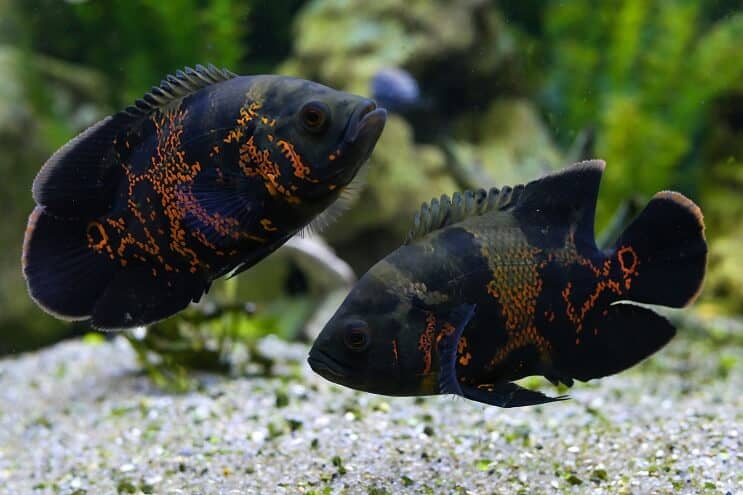
Due to their aggressive, territorial personalities, oscar fish shouldn’t be housed with the majority of fish species.
Although oscar fish are used to being surrounded by other fish species in the wild, tensions can rise in a tank with limited space, causing fights, bullying, and fin-nipping. Housing these fish alone is best.
However, if you wish to establish a community tank, choose large, passive fish that won’t get in the way of oscar fish.
Great tank mates for oscar fish include:
- Bichirs
- Firemouth cichlids
- Silver dollars
- Jaguar cichlids
- Green terrors
- Sailfin plecos
- Convict cichlids
- Arowanas
- Severum cichlids
If you plan to house oscar fish together, make sure there’s enough room in the tank. Use a 55-gallon tank for one oscar fish, and add an extra 30 gallons for each additional fish.
Don’t add small fish or invertebrates, like shrimp and crabs, to the tank because oscar fish eat any fish that are smaller than their own size.
Diet and Feeding
In the wild, oscar fish eat a varied diet of larvae, small fish, and plant matter. As omnivorous, opportunistic fish, oscar fish eat anything they can find, and you should replicate this varied diet in captivity.
Feed oscar fish a combination of store-bought pellets or flakes, live/frozen food like daphnia and brine shrimp, and plant-based foods like algae wafers or green vegetables. Oscar fish have natural hunting instincts and enjoy catching and eating live food.
Split feeding into two or three sessions per day. In each session, only feed the oscar fish as much food as they can eat within two minutes.
Breeding
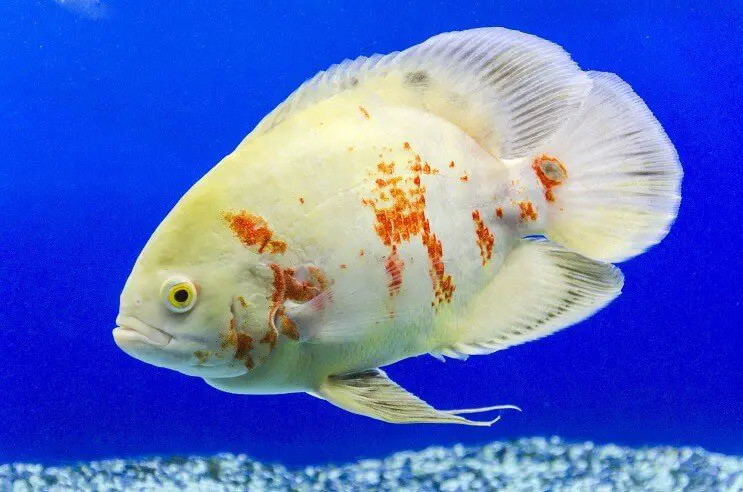
Breeding oscar fish in captivity is difficult and often requires a lot of fish. Oscar fish are picky about their mates, and putting a male and female in the same tank in the right conditions doesn’t guarantee breeding success.
However, if you’re adamant about breeding oscar fish, here’s what you should do:
- Select a mature male and a mature female oscar fish (the fish typically mature after reaching one or two years old).
- Place the male and female in a separate breeding tank decorated similarly to the home tank. Lower the temperature of the water by a couple of degrees to mimic the rainy season of their natural habitat, which encourages breeding in the wild.
- Change the water every couple of days and sprinkle water on the surface to aerate the tank. Feed the fish a varied diet of live and frozen foods.
- If the pair are interested in one another, both fish will flare their gills and waggle or vibrate their tails. If the pair show no interest in one another or begin to fight, separate the fish and try with another pair, or try a new female with the same male.
- After successful breeding, the female will lay up to 3,000 eggs on a clean rock surface.
- The parents will guard the eggs for up to three days until the eggs hatch.
- Remove the male and female after the eggs have hatched to prevent the parents from eating the babies.
- Raise the fry in the tank with an added sponge filter and feed the fry specialized food for young fish, four times per day.
Should You Get an Oscar Fish for Your Aquarium?
If you’re planning to set up a new tank, preferably dedicated to a single fish species, oscar fish are a good choice to consider.
However, if you’re a beginner aquarist, or your tank already houses fish that oscar fish could bully or eat, oscar fish aren’t suitable for you. Oscar fish aren’t high maintenance, but the fish are known to fight and show signs of aggressiveness.
In the right environment, oscar fish are beautiful, colorful fish that exhibit intelligent, unique social behaviors.
Oscar Fish FAQs
- Can oscars eat guppies?
- Why is my oscar fish laying on its side?
- How do I know if my oscar fish is dying?
- How can I tell if my oscar fish is male or female?
- Can oscar fish eat mussels?
- What size tank do you need for an oscar?
- Do oscar fish have nostrils?
- Are blue oscars real?
- How many oscar fish can you have in a 75-gallon tank?
- What do oscar fish like in their tank?
- Can angelfish live with oscars?
- Do oscar fish like mirrors?
- Do oscar fish recognize their owners?
- What kind of fish can live with oscars?
- How much do oscar fish cost?
- What size tank do I need for two oscars?
- How many oscar fish can stay together?

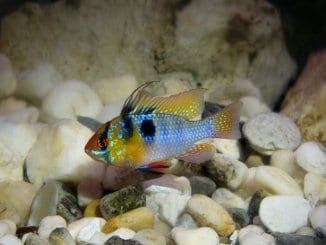
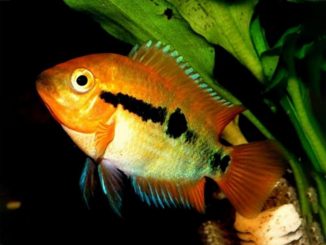
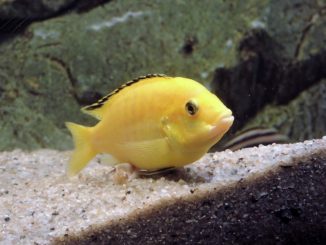
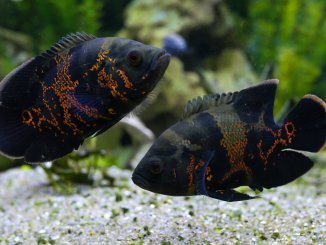

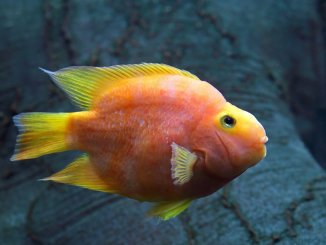
I have an oscar in a tank with an albino rainbow shark, bristlenose pleco also an angelfish.
My oscar is tank mates with a redeye bass
Hi, my common oscar lives happily with 2 albino pangasius catfish, a spotted sydontis and 3 bnose plecs
I have albino Oscars with blue acaras, silver dollars, lemon cichlid,banjo catfish, sail plec, red tail catfish all doing great no problems at all
I woul put an 0scar cichlid with black crappie sunfish
I have a huge 10+Inch Oscar (panda’s his name) in a beautiful 75 gallon with a 5 inch rainbow shark (bullet) and 2 chunky Raphael cat fish ( rubble, and double) they are all super happy and thriving! They have all lived together in my dinning room since the beginning going on 4 years. The next step is to get them in a 120 gallon!
I’ve only just received an Oscar from my mum as a gift and I have no clue about them?? And as I’m on a government pension I can’t afford a 55 gallon tank straight away I can get one in 2 weeks ….please help me I clueless!
Hi Shandi, what is the Oscar currently housed in? He should be fine for a week or two until you can get 55 gallon tank in a couple of weeks. Thanks, Robert
I’ve had one in a 20 gallon tank in my classroom for about a year. I know this isn’t the ideal situation, but he was small when I got him and being clueless, I had no idea he would grow so large. I am finally upgrading to a fifty gallon tank thanks to generous donors! So, they can survive in a smaller tank :)
Please tell me your tanks size..what is water capacity of you tank
I have a 6 inch (head to tail) Red Oscar in a 55 gallon along with 2-5 1/2 inch Bala sharks and 1-4 1/2 inch Silver Angel fish, they get along nicely being they’re in the same size range
I have an albino oscar and a tiger-barb oscar and the tank mates are a fire mouth cichlid an electric blue cichlid a tin foil catfish a sucker mouth algae eater and a freshwater perch. My oscars are just over 7″. All my fish were gotten very young and they are really good tanks.
I have a tiger Oscar, a blood parrot cichlid and two large red fin sharks. All coexist happily in a 55 gallon tank.
I hav three Oscar as yes they are very territorial fish, I like that about them, I hav two Oscar in a 55gal tank, with a jack demsey an a few gold fish
Can Oscars live with Africa Cichlids?
Hi Will, personally I’d keep Oscars in a species only tank. If you’re set on keeping them with other Cichlids, you could keep a couple with Green Terrors, Convict Cichlids or Jack Dempseys. Thanks, Robert
I have a 55 gallon tank with a tiger and albino oscar, and also a turquoise severum and a gold severum. Although my tiger oscar tends to chase and nip at my albino oscar, they mostly get along fine. They are all around same size, about 3 to 4 inches long but tiger grows faster than other fish in my tank.
Well, I have a 7″ tiger oscar (Diesel) and he will not allow anything else in the tank with him – 75 gallons. Though in the tank with him is a pleco (ghost) which is the same size. I had to give Ghost plenty of hiding places because an oscar will gut out a pleco’s belly. So, I don’t suggest putting another fish in the tank with an oscar if the tank is smaller than a 55 gal or smaller, though the tank looks nicer when there are more fish in it. Fish lives in an OCEAN and we put them in a drinking glass – sort of speak.
I have got a pair of most beautiful Tiger Oscars in a 115 gallon aquarium for an year or so.
I got a 200 gallon tank for my little Oscar (only 2 1/2 inches) and his buddy is a Jack Dempsey (2 inches).
I think I might have over killed the tank size a little, but got one hell of a deal on it, and those two should be happy in it for years to come.
How do you clean a tank like that twice a week like the article says.
Good question I was wondering the same thing lol
I have two oscars and a sailfin pleco in a 75 gallon tank, which is way to small. But we just got a 154 gallon tank off of facebook for $100 and are soon going to move them in it. The two oscars I have were my beginner fish, aka the second and third fish that I have ever put in a tank. I have an albino and tiger oscar that are both maybe 10 inches, both two years of age. When got the first oscar, I kept it in a one gallon due to how small it was, but then put it in a 5 10 gallon tank when it was two inches big. Around the same time, I spotted an albino oscar in a store that was at the bottom of the tank on its side, and bought it out of sympathy (It is now the most aggressive one and has the largest appetite). I ended up putting both the oscars in the 10 gallon, but the albino oscar tore most of the scales off of the tiger oscar, so then I had to move it to the 5 gallon tank. As a result, the tiger oscar has a malformed jaw because of how cramped it was. When we moved them both into the 75 gallon tank, we added a sailfin pleco with them and it was less than an inch long. The first thing that happened when I added the pleco was it having half of its body in the tiger oscars mouth because the tiger oscar tried to eat the pleco, (at this point the oscars were about 5 inches long). And thats all the interesting moments I have with them, but now the pleco is 16″ or 17″ long.
I got to know how did you get the Oscar’s not to eat the pleco? I heard they won’t because like any catfish they have barbs. Just curious how that story ended and he or she survived to 16 inches. How long do you think it took to get that big?
Cam Oscars live in a round tank
I’m getting a pair of Hybrid cichlids called the (NIGHT CRUISER CICHLID ??) they are bloodthirstingly aggressive literal killers the male gets to a large 40 inches the female 16 inches I will add 4 firemouth cichlids 2 blue botia loach catfish and 1 single male 0scar cichlid.
Thanks for informative article. I have one 8″ oscar with common pleco housing in 55 gallon tank. Sometimes my oscar chase pleco but rest of the time it doesn’t bother.
I’ve got a friend who’s currently unemployed, and is suggesting I take care of her fish.
It’s a seventy-five gallon, with an oscar, three convict cichlids and a wild-caught flathead.
She said I can re-home the cichlids, and I suggested re-releasing the catfish back to where she caught it.
I have an African sideneck turtle, Kobe, I had for going on a couple of years, now. Last time I checked, she was about four and a half-inches long (quick rule of thumb for keeping aquatic turtles, every ten gallons of water for one inch of their shell-length). I personally think she’s fully-grown, now, ‘cuz she hasn’t grown *that* much since I last measured her. Anyway, me and my folks were going to upgrade her to a bigger aquatic turtle-specific tank, but this just came out of the blue with her tank and collection.
Funny enough, there’s a video on YouTube from literally five years ago with this guy, also with a 75-gallon, with an albino oscar, an African sideneck just like my Kobe, and a Mississippi map turtle (me and Christina don’t have a map turtle).
I *literally* don’t have much experience with fish; I made the mistake of putting a bristlenose pleco in with Kobe. Sure, it grew about an inch or two longer, and she left if alone for I would say a good year and a half, but one day she just attacked it. I quickly scooped him (at least I *thought* it was male, “Cookie”) up, put it in my mom’s betta tank, but he later died from the stress afterwards.
Again, I don’t have *that* much experience with fish, but with an oscar’s larger size and aggression, would my turtle (African sidenecks have their own aggressive streaks, too) leave it well alone?
I have a 36 gallon bow front tank which I purchased about a month ago. I have an Oscar with a Parrot Cichlid and 3 Plecos left. They are all getting along fine right now after Ocsar killed all the other fish I had(about 15) within 2 days of setting up my aquarium. It seems the Oscar and Parrot Cichlid are best buddies now seen swimming around together often. Both have doubled in size in a month.
I have a 125 gallon tank with a 9 inch albino Oscar and an 11 inch red Oscar with a 7 inch Rot Keith Severum and 6 inch Jack Dempsey. Tank boss is the red Oscar, all tolerate each other well. The Sevrum and Jack Dempsey occasionally get into it, but nothing serious.
Our Oscar is a year old and extremely peaceful. We have a 75 gallon tank and the tank mates are 2 neon tiger barbs, two neon tetras, a rosy barb, a corydora, two australian rainbow fish, a chinese sucker, a bristol nose pleco, a pictus catfish, a electric yellow ciclid and a feeder guppy. They all swim around happily and not stressed at all. This tank started as a neon tank And became a catch all for bullied fish from our other tanks. It’s a weird mixture but beautiful community tank.
We started off with 2 Oscar fish then added 2 parrot fish, all was going well :) then added a silver arowana! The oscars turned quickly and started attacking the arowana so we had to separate everyone! We moved the oscars into their own tank & added 2 more oscars (all now cohabitating smoothly) then added a fire eel in with the arowana & 2 parrot fish (also now cohabitating smoothly) we also have a large common plec in with the 4 oscars & 2 albino plecs in with the others.
We just bought a 125 gallon tank and we’re trying to decide how many Oscar would be comfortable. We had a 55 gallon with an albino Oscar and a tiger Oscar, and lost them both during an ice storm that knocked out the power for 3 days. I appreciate all the success stories it gives me hope.
Anyone have any experience with a water softener being a problem with water changes?
We have really hard water naturally and I wasn’t sure how the softener would change conditions for the Oscar.
TIA
These are one of the hardest fish to breed in captivity.I HAVE TO CALL BULL ON THIS COMMENT I have had my 2 for just a month and up till 4 days ago I didn’t know they were A PAIR well I came home from work today and found an egg covered rock in my tank I have not done any of the things in this post to have this happen I just happen to get a young pair that decided their new 120g home was the perfect place to start a family !
Wish I’d read this before I bought three lovely little Oscars for my 70 litre tank (I can hear you gasping and tutting away already ?). Apart from munching on a few balloon mollies and my Betta (the rest got moved real quick to another tank), they seem to be living quite happily with a couple of ghost knives, an angel, two bristlenose plecos, a couple of gouramis, some sailfin mollies and a loach – I moved the corydoras as well, just in case. Never seen such enthusiastic feeders. Probably doesn’t hurt that I feed them tidbits out of my fingers just for the fun of it whenever I walk past the tank! And yes, I’ve got a 4x1x1″ tank in set-up stage, so they’ll be getting moved soon. They’re still only about two inches, but I can’t wait till they get bigger.
My oscar is very aggressive at night when the lights are off how do I calim him down
Absolutely not, Oscars must be in at least a 70 gallon tank